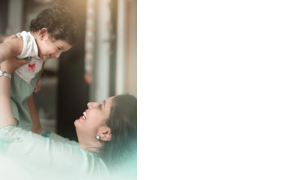
Oct 22 2024.
views 206Did you know that every hug, smile and conversation we have with other people is most likely influenced by invisible patterns from our childhood?
These patterns are called attachment styles which serve as roadmaps for how we connect with friends, partners, and family members as we grow older. Understanding your attachment style can provide valuable insights into your behaviour and emotional responses when it comes to your relationships, leading to improved communication and healthier connections.
Attachment theory was pioneered by psychologists John Bowlby and Mary Ainsworth. It explains how the parent-child relationship emerges and influences subsequent development as an individual. Mary Ainsworth and her colleagues conducted an experiment called ‘Strange Situation’ in 1970. According to this experiment, they discovered three main styles of attachment- secure, ambivalent, and avoidant. Later, another attachment style was added in 1986- the disorganised attachment style.

An attachment is a deep and emotional bond that connects one person to another across time and space. The attachment system is most readily activated during the first five years of life, a period characterized by high levels of vulnerability and dependence. Once established, it is a style that stays with you and plays out today in how you relate in intimate relationships and in how you parent your children. In this article, we will explore the four primary attachment styles—secure, anxious, avoidant, and disorganised.
The Foundation of Trust: Secure Attachment Style
This attachment style is characterized by trust, an adaptive response to being abandoned, and the belief that one is worthy of love. These individuals are usually direct, responsive and self-assured. As children, they depend on their parents or caregivers. They usually have healthy communication feeling safe and valued, allowing them to express their needs and emotions without fear of rejection. As they become adults, they approach intimacy with a sense of ease, knowing that they can rely on their partners while also granting them space to grow. This balance creates a nurturing environment where both partners thrive, fostering resilience in the face of challenges Basically, a secure attachment style is like a sturdy bridge, that connects two people and builds on trust, understanding and open communication.
The Push-Pull of Emotional Uncertainty: Ambivalent-Insecure Attachment Style
This is often characterized by a push-pull dynamic, which creates a landscape of uncertainty in relationships. Individuals with this style are torn between seeking closeness and fearing abandonment, leading to intense emotional experiences. As children, they are preoccupied, sensitive, anxious and often doubt themselves. Also, when they are in need of help, they will ask for it indirectly or not ask for help at all. This usually happens when they learn that their caregiver is unreliable and does not consistently provide responsive care towards their need.
As they grow older, they often crave reassurance and validation from their partners but may also struggle with anxiety about whether those feelings are reciprocated. This can manifest as clinginess or jealousy to perceived slights, which can strain connections. Despite their desire for intimacy, they may find it challenging to trust fully, creating a cycle of emotional highs and lows. Ultimately, their relationships can feel challenging, marked by a longing for security that often feels just out of reach.
The Walls We Build: Avoidant Insecure Attachment
This refers to an attachment pattern where individuals tend to avoid closeness and emotional connection with others. They appear to be self-reliant, distant and dismissive. As children, they have difficulty expressing emotions. They build walls around themselves; each brick a carefully crafted defense against the outside world. This attachment style usually develops from caregivers being emotionally unavailable or unresponsive, leading the child to internalize the belief that they cannot depend on them. They rely on self-sufficiency and find comfort in solitude. As adults, they may be uncomfortable with intimacy, value independence highly, and often suppress their emotions as they believe that closeness would unravel the peace they have constructed within themselves.
The Confusion of Closeness and Fear: Disorganized Insecure Attachment
Individuals with this attachment style show qualities of both avoidant and ambivalent anxious styles. They often display inconsistent, contradictory or erratic behaviour. They may simultaneously seek and fear closeness, leading to confusion and unpredictability in their responses to others. Individuals with this attachment style often have gone through childhood trauma as this develops from caregivers who are frightening, abusive, or unpredictable, creating an environment where the child feels both a need for safety and fear of the source of comfort. As they grow older, they tend to have a desire for close relationships while fearing vulnerability. They are afraid of rejection and don’t fully trust other people. They struggle to develop a coherent strategy for connection especially when it comes to relationships due to their internal conflict between a desire for intimacy and the fear of it. As a result, they may experience difficulties with trust and regulation of emotions.
Understanding attachment styles helps us gain precious insights into our relationship dynamics and emotional responses. Secure attachment offers a foundation for healthy, trusting connections, while ambivalent insecure attachment highlights the complexities of love interconnected with anxiety and uncertainty. Recognising these patterns can empower us to make conscious choices in our interactions, fostering growth and healing where needed. By embracing this journey of self-reflection, we can develop more fulfilling and secure bonds, while nourishing our lives and those of our loved ones.
0 Comments